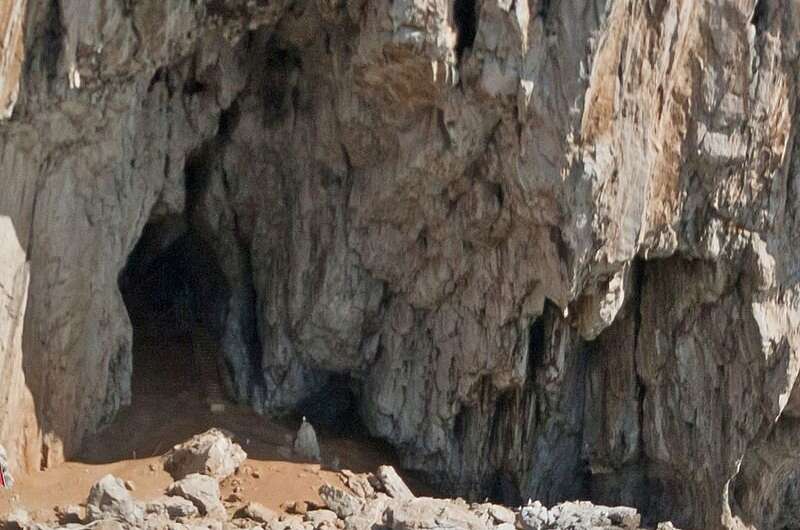Nearly 40 years have passed since downtown Rio was overrun with what one awestruck reporter declared “the greatest and most fantastical popular demonstration of all time”.
It was 10 April 1984, the twilight of Brazil’s two-decade dictatorship, and more than a million dissenters from across the political spectrum had hit the streets with a deafening and unified call for change.
“There was such euphoria, such unity, such kinship. You felt you could breathe the freedom,” said Caíque Tibiriçá, one of the organizers of that historic rally, which helped catapult South America’s biggest country towards a new democratic era – which some now fear is under threat.
This Saturday, Tibiriçá, now 70, will return to the same streets outside Rio’s Candelária church for what he hopes will be a similarly forceful demonstration of popular resolve – this time targeting his country’s far-right president Jair Bolsonaro, whose authoritarian idols the septuagenarian communist once helped evict.
 © Photograph: Pilar Olivares/Reuters
© Photograph: Pilar Olivares/Reuters “Brazil cannot take what’s happening any more. It’s one crisis after the next,” said Tibiriçá, who is again helping coordinate the demo and believes Bolsonaro’s assault on democracy and handling of a Covid outbreak that has killed nearly 600,000 Brazilians mean he must be impeached.
As objectors intensified their campaign against Bolsonaro, with plans for rallies in dozens of major cities, Tibiriçá urged them to seek inspiration from the broad political coalition that helped defeat the 1964-85 dictatorship.
On stage at the 1984 rally stood an improbable alliance of political heavyweights, including Rio’s leftist governor Leonel Brizola and the future president Luiz Inácio Lula da Silva, and conservatives such as Tancredo Neves and the 90-year-old Catholic lawyer Sobral Pinto.
“These were people with totally different political projects but one common objective,” said Tibiriçá. “They had different ideas about the economy, social issues and the country’s development but they shared one goal: that we should have [direct presidential] elections.”
Such unity has so far largely eluded those battling Bolsonaro, despite the social, economic and environmental havoc that has played out since the rightwing radical took office in January 2019.
Some on Brazil’s right have disavowed the extremist leader they helped elect but refused to join the left-led street protests that have been taking place since May. When one rightwing group recently called anti-Bolsonaro protests, they were widely shunned by the left.
Thiago Süssekind, a student leader helping organize Saturday’s rally – which will be followed by another on 15 November – said he hoped Bolsonaro’s foes were finally coalescing, as the extent of the danger he posed sunk in.
“Bolsonaro is a threat to democracy, and when democracy is at stake whatever ideological differences we might have pale into insignificance,” said Süssekind, 22, who leads the Rio chapter of the centrist group Acredito.
“When you have a president threatening not to hold elections, threatening the supreme court and threatening a coup, you need to join forces. One group won’t stop this on its own. The only way to effectively respond is by uniting the right, the left and the centre,” Süssekind added, citing the 1984 pro-democracy movement as a model.
Not everyone believes such an alliance is possible – or that large sections of the opposition even want Bolsonaro impeached.
Thomas Traumann, a Rio-based political commentator, said the centre-right Brazilian Social Democracy party (PSDB) appeared more focused on deciding which of its leaders would challenge Bolsonaro in next October’s presidential contest, which polls suggest the embattled incumbent will lose. The leftist Workers’ party (PT) seemed inclined to allow Bolsonaro’s political meltdown to continue for another year until its candidate, Lula, could trounce him in the 2022 vote. “Everyone wants to face a weak Bolsonaro,” said Traumann, who believes Bolsonaro will probably see out his four-year term.
Perhaps the opposition’s only chance of preventing that happening was with a massive show of force this weekend. “They need to get more than a million people into the streets,” Traumann said. “If they don’t do it now, forget it.”
Regina Helena Bastos, a retired teacher who took part in the 1984 march, also doubted whether left and right would manage to unite against Bolsonaro, as they once did in favour of democracy.
“Right now, I don’t see hope or union,” sighed the 72-year-old who said anger, rather than optimism would drive her to join Saturday’s rally.
“Back then [in 1984] it was a feeling of: ‘Wow! How incredible! Here I am. Everyone’s singing.’ It was beautiful,” she reminisced.
Today, Bastos felt despair over the future of the country of her five grandchildren, whose names are tattooed onto her right wrist. “Bolsonaro represents everything that is bad: sewage, rottenness, shame, decay, the abyss,” she said. “I just cannot understand how this man was elected.”
Tibiriçá was more upbeat about the opposition’s prospects as it prepared for two crucial mobilizations. “My sense is that it will be big,” he said of Saturday’s protest, outlining his reasons for wanting Bolsonaro out. “I lived through one dictatorship – I don’t want to live through another.”
Süssekind was 15 years away from being born in 1984, when central Rio witnessed one of the largest demonstrations in Brazilian history. But as he prepared to march this weekend, the student activist said he felt he was now at the vanguard of an equally momentous struggle.
History would remember the “grim page” that was the Bolsonaro era, when democracy came under siege and tens of thousands of lives were needlessly lost because of the president’s anti-scientific denial of Covid. “But it will also remember that there were those who defended democracy and defended life,” Süssekind said.
“This is an important, historic moment and I’m certain I’ll look back on it with pride.”














